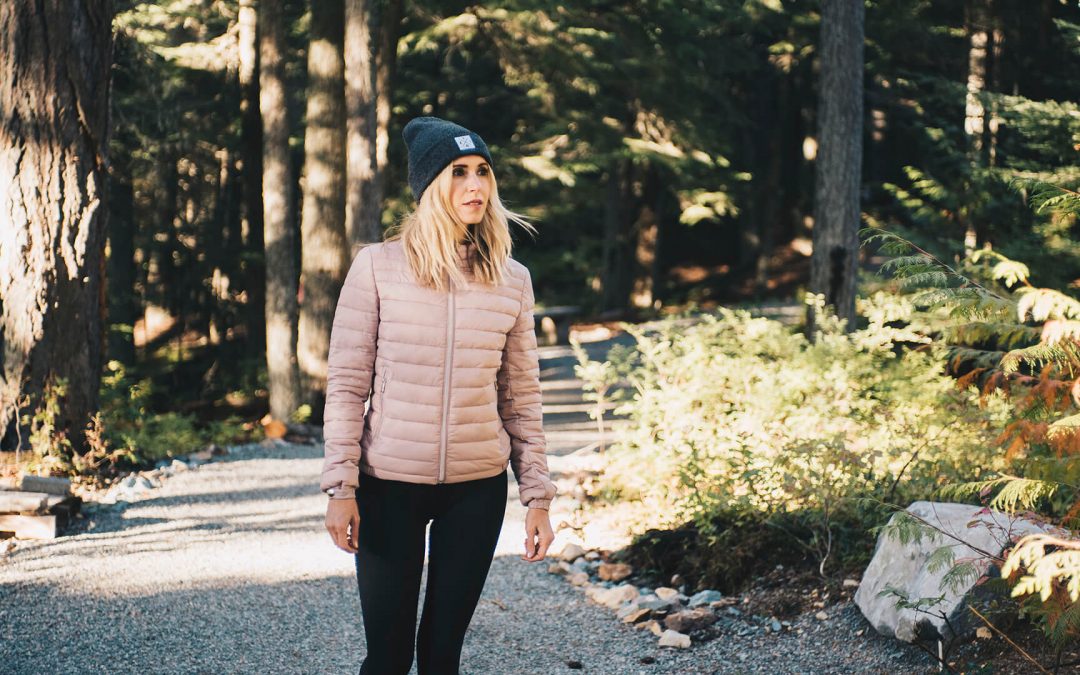As the days shorten and the mercury drops, it’s time to plan for safe and enjoyable winter workouts. If being outdoors is what keeps your motivation high, don’t resign yourself to six months of only sweating inside the four walls of a gym. Follow these tips to adapt your outdoor workouts for winter.
Layer Up
Everyone knows layering is the proper way to dress for cold temperatures. But it can get confusing quickly if you start asking people how to do it properly. Just remember one mantra: ventilate, insulate, protect.
- Ventilate: Your body still sweats in cold-weather workouts, so the first layer against your skin should be soft and smooth to prevent chafing, but also able to wick sweat away from your skin. Depending on how much you sweat, this layer could be cotton or technical fabric. The key is choosing a layer that helps you stay dry. Cotton is excellent at wicking but tends to hang onto all the moisture it wicks. For long workouts, technical fabrics with ventilation perforations are a better bet.
- Insulate: After your base layer, add as many thin, flexible layers of insulation as you think you’ll need for the temperatures, plus one more. You can always drop layers halfway through a workout, but you can’t add them.
- Protect: Finally, your protective layer (or shell) is your shield against rain and wind—the two biggest enemies of insulation. Nothing will sink your winter workout faster than getting wet or suffering through piercing winds. Look for a shell that is lightweight and water-repelling, but also includes some adjustable ventilation zones.
Know When to Shed (and Add) Layers
The proper time to shed a layer is long before you’re drenched in sweat. Remember how being wet is not your friend? Think proactively and remove layers before you’re too hot, then add them back as soon as you sense your temperature dropping. If you wait until you’re shivering, it will be far more challenging to recover the heat you’ve lost.
Fuel Your Body
According to the cold weather training experts at Fort Wainwright (in Alaska), the first line of defense against getting cold is properly fueling your body. This is because Glycogen, the fuel your muscles burn, can be used up more quickly in cold-weather workouts. And if you start shivering, Glycogen runs out even faster. Consider sub-zero temperatures your extra motivation to avoid the holiday sweets and stick to proteins, complex carbohydrates, and good old fashioned veggies.
Drink, Drink, Drink
Hydration is still as crucial to your health and your workout in winter—it’s just easier to forget about it without the sun beating down on your skin. Use an insulated travel mug to keep your water from becoming a solid. Or better yet, take a hot beverage. Runner’s World suggests hot cocoa or herbal tea with honey. Both can help refuel your body on a long run and warm you from the inside out.
Watch Your Back
Winter workouts quite often happen in darkness since our window for daylight workouts shrinks. Protect yourself with gear meant to keep you safe.
- Wear clothing with reflective elements, so you stand out to drivers.
- If you run near a busy roadway, give drivers even more notice with a headlamp or blinking beacon.
- Switch up your shoes to something more suited to mud and ice. Good trail running shoes will help your feet stay dry and help keep your feet under you.
Have a Backup Plan
We all have our limits. Running in the cold might be fine, but six inches of snow—forget about it. To keep your fitness plan on track, have at least two other fallback options ready to go for those mornings when you wake up to a blizzard. A punch pass to the local gym or pool, an exercise bike, and some at-home workouts are all great options to have at the ready.
Staying comfortable and safe are key elements of any winter workout. But if you struggle to stay motivated through the long winter, set yourself up for success. Register early for a spring race or plan a mid-winter vacation to a warmer destination. It’s easier to stick to your good habits if “bikini season” or the big race is just around the corner.

